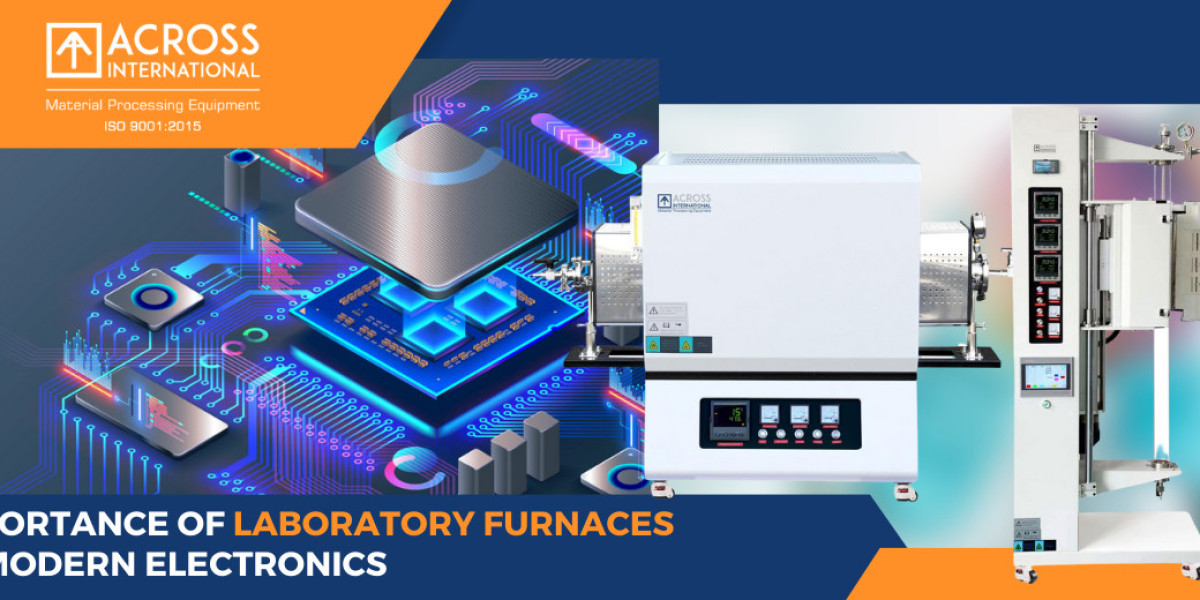Laboratory furnaces are essential tools for the development and manufacturing of modern electronics. They are used to perform a variety of tasks, including:
-- Growing single-crystal semiconductor ingots. This is a critical step in the production of many types of electronic components, including transistors, diodes, and integrated circuits.
-- Annealing semiconductors. This process improves the electrical properties of semiconductors by removing defects and redistributing dopant atoms.
-- Diffusing dopants into semiconductors. This is a process used to control the electrical properties of semiconductors by adding impurities to the material.
-- Shrinking solder joints. This process is used to improve the reliability of electronic assemblies by reducing the size of solder joints.
--Curing epoxy resins. This process is used to harden epoxy resins, which are used to protect electronic components from moisture and other environmental factors.
Manufacturers also still rely on laboratory furnaces to provide a moisture-free processing environment for producing and finishing electronic components. Laboratory furnaces are routinely used in-line to maximize production yields and to protect products like integrated circuits and PCBs from exposure to moisture. Despite the enhanced performance levels of modern electronics, liquid ingress due to process humidity is still a common concern in the manufacturing environment. Drying laboratory furnaces are routinely used to overcome these challenges.
Laboratory furnaces for Crystallization
Crystallization is the process where solids form in a highly-organized lattice structure. This natural process has been emulated using laboratory furnaces, enabling the preparation of single-crystal semiconductor ingots. The crystal growing process using an industrial furnace is most commonly conducted according to the Bridgeman-Stockbarger, or the Czochralski method. Each of which involves the manipulation of chemical reactions at elevated temperatures. Electronic wafers can be extracted from the resultant billets and used as substrate materials for various printed electronics architectures.
Laboratory Furnaces for Drying
Industrial drying is conducted on production lines to cure components while withdrawing process moisture and humidity from the processing chamber. While crystal growing ovens are typically incapable of producing more than one semiconducting ingot at a time, laboratory furnaces for drying are suited for batch-processing of multiple components simultaneously.
This is ideal for high throughput processing of electronics to limit hygroscopic damage and enhance production yields. Moisture is extracted from components by elevating the temperature of the processing chamber, while integrated ventilation systems evacuate process vapors and moisture from the unit. This mitigates the risk of integrated circuits and components succumbing to moisture ingress during cooling, which can reduce their end functionalities and capabilities.
The importance of laboratory furnaces in modern electronics cannot be overstated. They are essential tools for the development and manufacturing of many types of electronic components, and they play a vital role in ensuring the reliability and performance of electronic assemblies.
Here are some additional details about the importance of laboratory furnaces in modern electronics:
* Laboratory furnaces are used to grow single-crystal semiconductor ingots. This is a critical step in the production of many types of electronic components, including transistors, diodes, and integrated circuits. Single-crystal semiconductors have superior electrical properties to polycrystalline semiconductors, and they are essential for the high-performance electronic components that are used in today's devices.
* Laboratory furnaces are used to anneal semiconductors. This process improves the electrical properties of semiconductors by removing defects and redistributing dopant atoms. Annealing is a necessary step in the production of many types of electronic components, and it can also be used to improve the performance of existing components.
* Laboratory furnaces are used to diffuse dopants into semiconductors. This is a process used to control the electrical properties of semiconductors by adding impurities to the material. Doping is a critical step in the production of many types of electronic components, and it can also be used to modify the properties of existing components.
Read Here More About Importance Of Laboratory Furnaces In Modern Electronics








